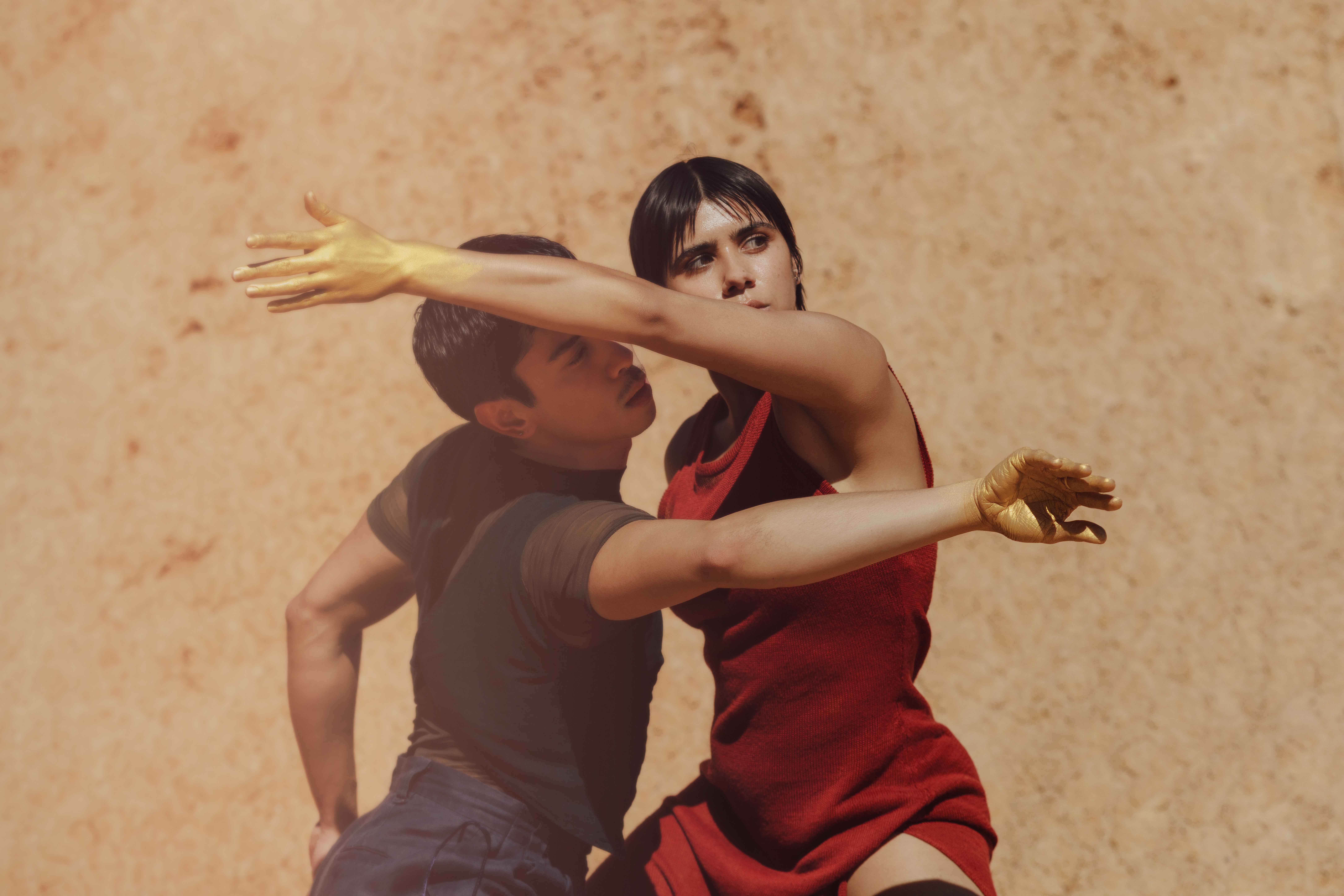
Two Blood - Learning Resource
Welcome to the Two Blood education resource.
Created with the support of the National Foundation for Australia-China Relations, this digital guide delves deeply into the creative processes and thematic ideas that have underpinned Two Blood. This resource is multi-lingual, with sections available in English and Simplified and Traditional Chinese.
Telling a sprawling story of belonging borne from the forgotten histories of our nation, Two Blood is a work that looks to our past to revel in the multiplicity of our present.
A ceremonial ritual at the intersection of the night sky.
A Tagalaka woman and Cantonese man embark on a forbidden love affair forged in the flames of a burning country.
Centuries later, their remains are discovered in a forever embrace, setting into motion a sprawling exploration of belonging that pierces the core of our identity.
Created by visionary artists S. Shakthidharan, Daniel Riley and Jasmin Sheppard, who has woven her own family history through the work, Two Blood sees Australian Dance Theatre continue to break new ground with an interdisciplinary ceremony that blends film, music, and movement across borders, cultures and time.
Revelling in our multiplicity, Two Blood is an intensely physical work that crashes through the narratives that have shaped our nation.
This multimodal resource has been designed to support educators and community in engaging with Two Blood, its themes and creative process. The information below provides an introduction and context to the work, with interviews providing insight into the creative process directly from the work’s creatives. All text is available in English, Simplified Chinese and Traditional Chinese, reflective of the story and intercultural collaboration. We also acknowledge the reactivation of Tagalaka language and significance of First Languages for First Peoples.
Throughout this resource the term ‘Aboriginal’ is used to refer to people who identify as Aboriginal, as preferred by Aboriginal-Chinese families and community. ‘Tagalaka’ is used when speaking specifically about the Tagalaka Aboriginal community.
Co-Directors:
Daniel Riley and S.Shakthidharan
Writer:
S.Shakthidharan
Co-Choreographers:
Daniel Riley and Jasmin Sheppard with ADT’s Company Artists
Music:
James Howard and Andy Qilong Chia of SAtheCollective
Lighting & Production Design:
Matthew Adey from House of Vnholy
AV Design:
Elias Nohra
Costume Design:
Zachary Lopez
Tagalaka & Chinese Story Advisor:
Jasmin Sheppard
Cantonese Consultant:
Nicky Tsz Tung Li
Additional materials:
Audio-visual materials from 宿 (stay) provided care of SAtheCollective
Artistic Associate:
Brianna Kell
Cast:
Joshua Doctor, Yilin Kong, Zachary Lopez, Karra Nam, Patrick O'Luanaigh and Zoe Wozniak
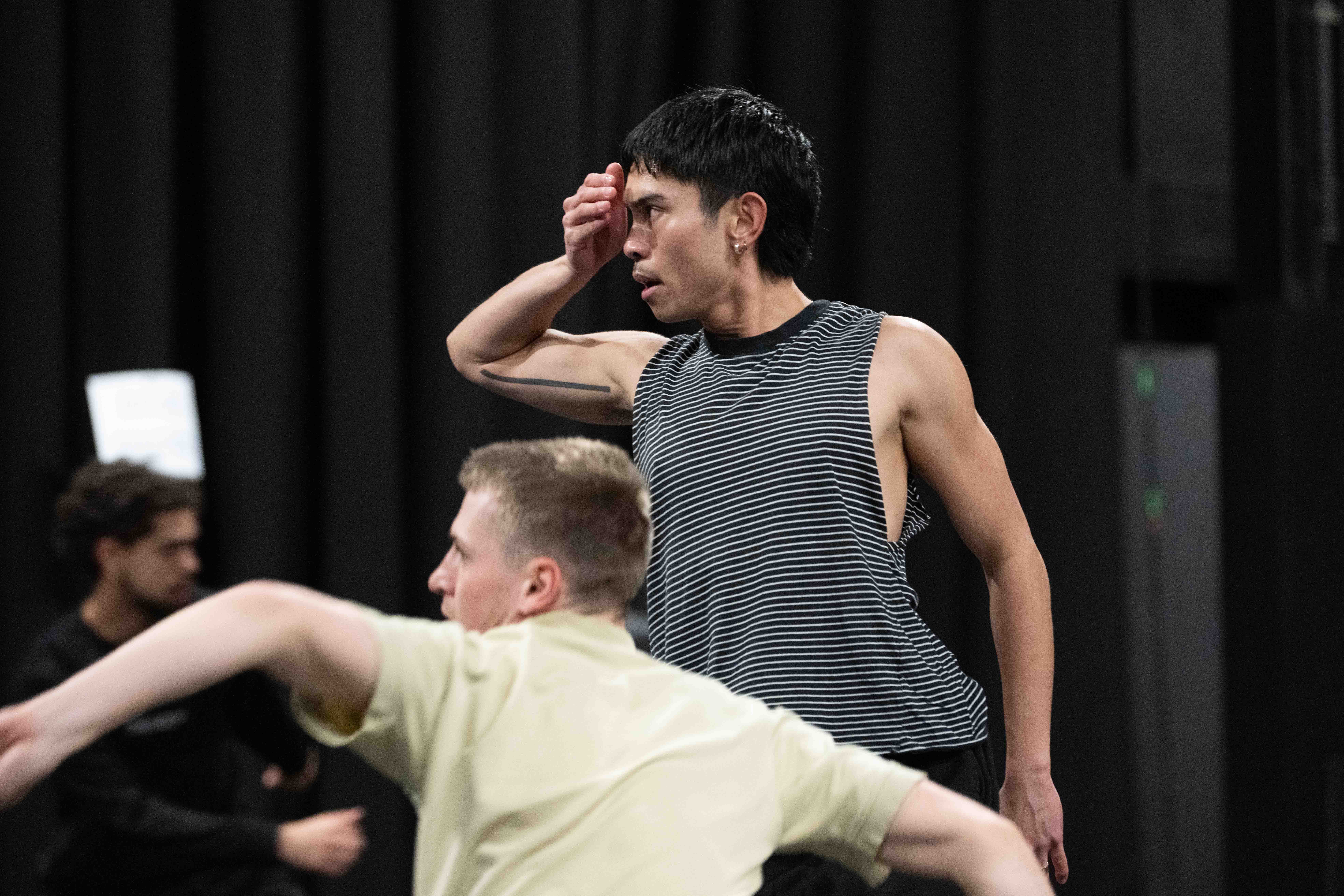
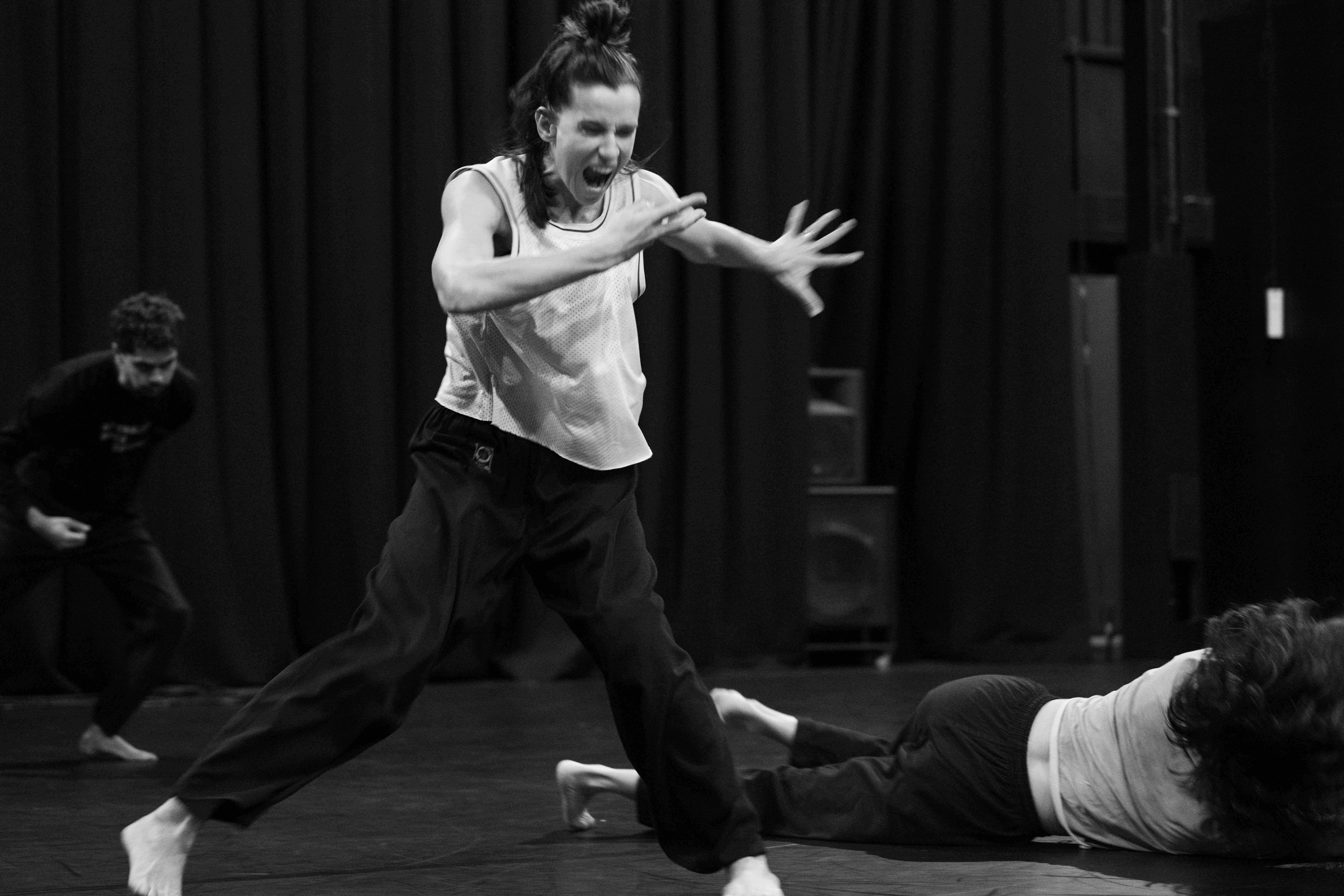
Daniel Riley speaks about connecting the ancient with the contemporary
Yeah, I think, and this is an interest of mine in general, in how to bring together I guess, the past and the present, but also the future that we're moving towards. I think the power in understanding history and diving into that gives us a greater sense of who we are and where we are individually, but also as an individual how we sit within our community and then how our community sits within the cultural and the social context of the world.
We are all standing on the riverbank, we have one eye looking very firmly to where we've come from, so upstream, and we are the present, but our other eye is very firmly looking downstream to the future and that river of history and that river of our stories is continuous. And so for me, being a custodian at this point in time, I get to stand really firmly on the riverbank with incredible humans and artists, and that we get to acknowledge the history of who and where we are, but also acknowledging that that flows through our present and onto our future.
I'm really grateful that I get to bring Jasmin Sheppard into the room and S. Shakthidharan into the room, who both have complex historical ancestries and that both of their heritages and elements of of both of their ancestries is this work, is half the work - is the idea of wanting to search for more, or for safety, or for community and having to travel the seas and the skies to be here in this country. And these are the voices that are not, I guess, considered mainstream in this country, even though these artistic voices are representative of communities that are a vast, vast population of this country. And so we need to be elevating these voices, and we need to be having these stories on stage, because if we're not interrogating, celebrating and elevating these voices, then we're just continuing to live in the dark. We're just actually continuing to not wanting to, and back to my first analogy, to look upstream.
I think there's a lot in this country where we very much want to look forward, but we don't want to actually look at how we got to where we are. You know, for me, I'm incredibly proud that ADT is doing a work like The Blood, it is powerful, it is honest, it is as all of our work, it is generous. And you know, I believe work like this can create some sort of cultural change in this country and in in the heart and the mind battle of what people see as our identity in this country.
Premiering in 2025 at the OzAsia festival (Adelaide), Two Blood is an Australian Dance Theatre (ADT) production presented in association with Kurinji. The work continues ADT’s collaborative practice, bringing together an incredible group of artists to create a new interdisciplinary work, sharing story through movement, text, song and moving image. Co-creating Two Blood are S. Shakthidharan, Daniel Riley and Jasmin Sheppard, who are joined by an incredible team of designers and collaborators to realise the work. S.Shakthidharan (writer and co-director) is a Western Sydney storyteller with Sri Lankan heritage and Tamil ancestry and is the Co-Founder and Co-Director of Kurinji. Daniel Riley (co-director and co-choreographer) is a Wiradjuri man and Artistic Director of ADT, Australia’s oldest continuing contemporary dance company. Jasmin Sheppard (co-choreographer) is a contemporary dancer, choreographer and director, a Tagalaka Aboriginal woman with Irish, Chinese and Hungarian ancestry. Jasmin generously shares the lived experiences of her family in the work.
Grounded in the textures of Tagalaka Country, of Savannah Country in Far North Queensland , Two Blood illuminates a story of Aboriginal-Chinese relations, a little known history of colonial Australia. The work centers on two characters, a Tagalaka (Aboriginal) woman and a Cantonese man and is described by creatives as both a mystery and love story tracing their forever embrace. Through their story the experiences of people living and working during the gold rush period is explored, shaped by the polices and attitudes of the time which includes the discrimination experienced by Aboriginal People and migrant communities. The work is an intersection of these experiences, interrogating both power dynamics and intimate relationships.
Speaking to the motivations of Chinese miners migrating to Australia in the search for gold is the work’s exploration of ‘more’- a pursuit for more, for material wealth and fortune. But imbued throughout the story is a question of connection, of belonging and identity. Both powerful and vulnerable, Two Blood continues ADT’s interrogation of Australian history and identity, unpacking our national narratives and investing in the push and pull of conversations of who we are, and where we would like to go as a society.
Jasmin Sheppard speaks about Two Blood as an act of cultural reactivation
Croydon was a place in Australia that was incredibly hardly hit by colonisation and mining and its impact on our community has been very deeply felt through the loss of language and through the loss of cultural practices. So I feel that within the process of this work, I have a duty to be able to tell those stories of the challenges, but also find ways to be able to share the stories of resilience and what can be re-awoken through a creative process and through making a work and telling the stories of your family.
The community is revitalising Tagalaka language. It's in it's very, very early stages, so it's been really beautiful to witness how that journey has started from the very beginning. There are lots of communities in Australia who've been on that journey and have now got dictionaries and the community are learning language. And I feel like my generation within the Tagalaka community, we have a role and our role is to go back and to start to strengthen our relationships back to Country.
Through the process of colonisation and people leaving because of because of gold mines, the missions, having to work on the cattle stations, a lot of Tagalaka People and descendants ended up in different parts of Australia, Brisbane, there's lots in Melbourne, North Queensland, Cairns and it's been a process that I've witnessed and been a part of in the last decade, seeing other Tagalaka People going back to Croydon and finding a way to rebuild. But the warmth that I feel from other community members who are also going back is really beautiful, that there's this shared understanding that we have lost a lot, but we've also got so much still, and we have each other and we have our beautiful country as well.
S.Shakthidharan speaks about intercultural creative processes
My name's Shakthti, I'm the writer and Co-Director of Two Blood. I think I'm a little unusual as a writer because for me the most important first step is to find out what the story needs.
For Two Blood, that meant sitting and holding space for Jasmin and learning more about her family story in Tagalaka country. And both she and I knew that we wanted to look at and celebrate this interweaving of Tagalaka and Chinese heritages and Australia's long migrant history and the multiplicity that's inside all of us. And dance is interesting because there's a way of exploring there what the body remembers and also what's inside the body from it’s ancestors. So from all of that, it felt like Two Blood had to be interdisciplinary and it felt like there had to be a process of recovering and unearthing and also to essentially find a way for these bodies to know their secrets again and find a way to be vulnerable with them, with someone else.
So I've done 3 plays now they've been very focused around working with South Asian heritage artists. It's forced me to reckon with the complexity of my community and my upbringing and it's been wonderful to be able to come into Two Blood and be able to grapple with the complexity of Aboriginal experience in Australia and Chinese experience in Australia and not be afraid of showing that complexity on stage.
And it becomes this really beautiful thing because between Jasmin, who's Tagalaka and Karra and Josh, who have different country, Dan as well, and then Karra and Jas both have Chinese inside them. And then Yilin is a new member of the dance troupe, Andy who's one of the composers for the show over in Singapore, they all have different types of Chinese heritage and ancestry and it becomes this really wonderful thing, because initially you're like happily overwhelmed by the complexity but then it becomes an exercise in solidarity. Because in showing the very specific different natures of both black fella and Chinese experience in Australia, you start to work against all the kind of mainstream media narratives that homogenise these groups, and you start to get into the very real, specific human elements of who people are.
So it's been so wonderful, endlessly complexifying the South Asian experience in my plays, and now I feel like I have this tool set to help other artists not be afraid to do the same thing with their own cultures inside Two Blood.
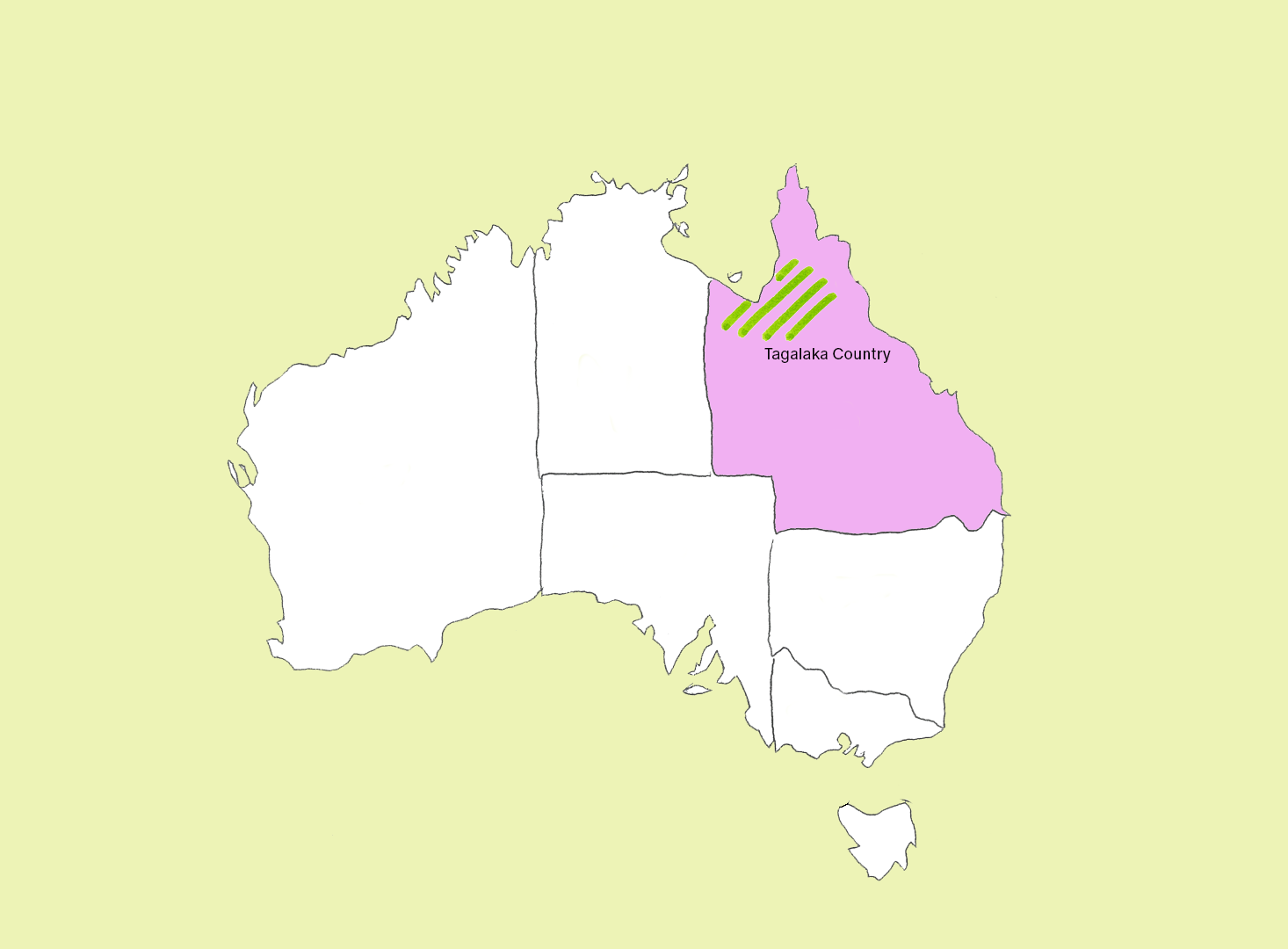
Tagalaka Country describes the area of land and deep relationships of custodians, the Tagalaka People, and their continuing connection to land, water, culture and community. Tagalaka Country covers various lands in the Gulf Savannah region around the townships of Croydon, Normanton and East Hayden in Queensland.
The story of Two Blood is set in the Gulf Savannah town of Croydon, on Tagalaka Country, with co-choreographer Jasmin Sheppard drawing upon her own cultural heritage as a Tagalaka woman and her family’s lived experiences to share within the work. Croydon is an inland gold mining town known for its pastoral lease and significant boom during the gold rush. The establishment of pastoral leases and mining significantly impacted Tagalaka Peoples access to their homelands and sites.
These restrictions were further impacted by government policies, such as the Aboriginies’ Protection Act, Restriction of the Sale of Opium Act 1897 (Qld) and the White Australia Policy which discriminated against Aboriginal and Torres Strait Islander People and Chinese migrants Working on pastoral stations provided an avenue for Aboriginal community to stay on Country, but was largely characterised by discrimination, violence and stolen wages.
Jasmin Sheppard's Aunty Joyce speaks about Tagalaka country and the histories that have informed Two Blood
I'm Joyce Shepherd and I am Jasmin's aunty and my mother is her grandmother, and we love her dearly.
The Chinese culture is very ancient, as is the Aboriginal culture and strangely they have a lot of the same cultural manners, if you like.
When Sam Ah Gee came to Australia initially for the gold as did you know a lot of Chinese men. He got involved with our great grandmother, your great-great grandmother, who was Maudie, who was an Aboriginal lady. When the gold ran out, he became a farmer.
And I think at the time, the cultural differences were such that it was really taboo. It was like the white man not being allowed to, or weren't supposed to integrate or have relationships with Aboriginal People. And I think it would have been the same for the Chinese people, that they were taboo. You know, you weren't supposed to mate with a Chinese man and vice versa. I just feel the cultural differences at the time were such that it was frowned upon quite strongly.
I just think it's a wonderful thing for us to know where we came from and, and why these things happen. And I just love the history of finding that, you know, we're not just us.
We're not just, “we're born in Australia, therefore we're Australians”, but we have ancestors that weren't. And I just want to know where they come from and more about them, because I don't think our family history is complete until we do.
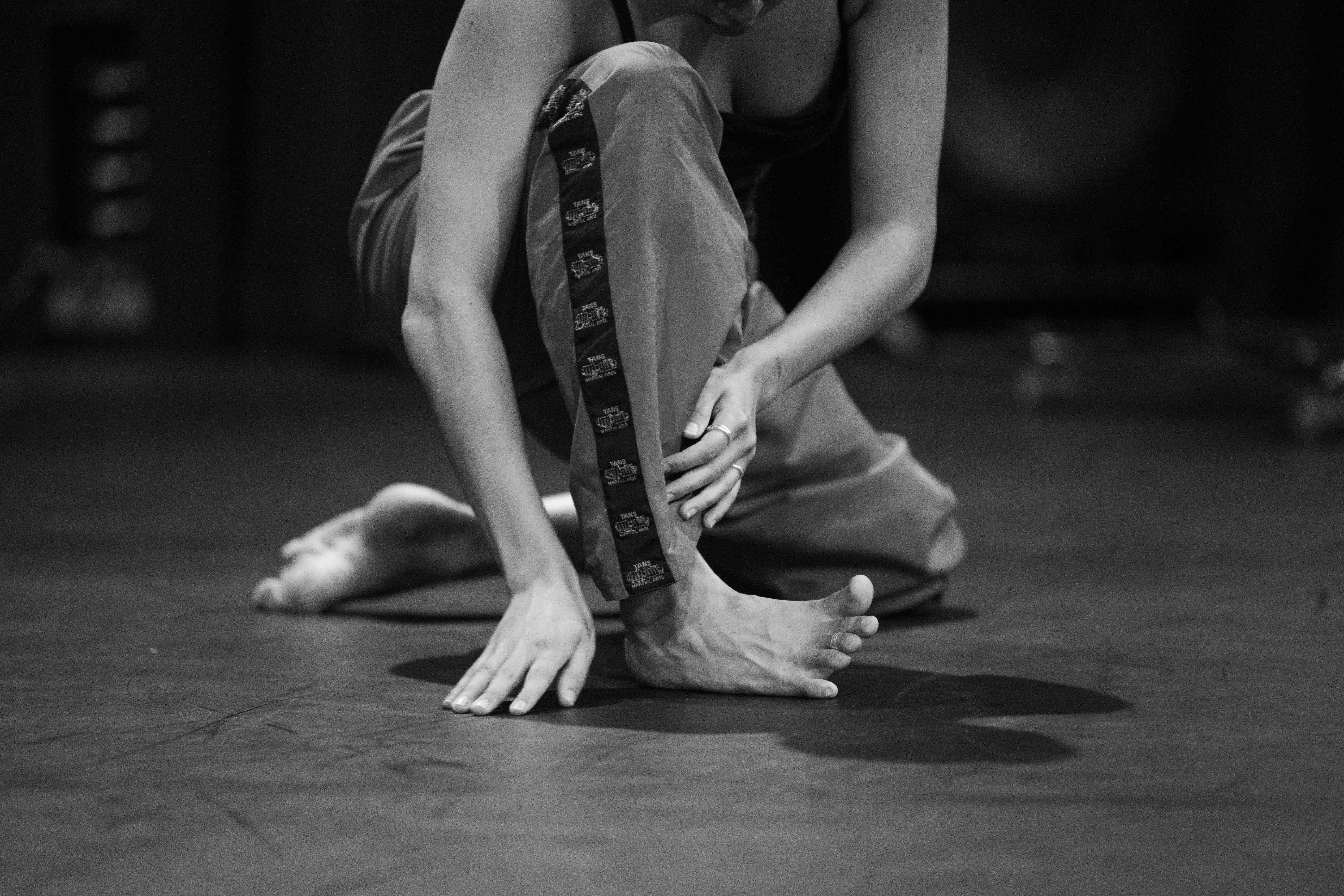
Jasmin Sheppard's choreographic approach to Two Blood.
I'm Jasmine Shepherd and I'm a Tagalaka woman from North Queensland and I'm one of the co-choreographers on Two Blood.
My choreographic approach to this work, which is highly physical and also very delicate and beautiful, is to really imbue in the dancers a sense of origin of where a lot of these stories come from. So I've brought a lot of textural context from Croydon in North Queensland.
My approach has been to bring elements of Country into a lot of the choreographic explorations, such as textures of plants that are endemic to Croydon. A lot of the elements from the ground, like the iron and the the gold and the granite, what it feels like to be in the expanse of Savannah country and how do you physicalise that in the body?
So really just to bring context from a country point of view, but also a cultural point of view.
What were the experiences of my great grandparents and a lot of their community members and descendants from both the Chinese and the Aboriginal communities up there, forming relationships and experiencing what it meant to go through colonisation and the gold rush at that time in that particular area of Australia?
Daniel Riley speaks about connecting dance and story
My name is Daniel Riley, I'm the artistic director of Australian Dance Theatre and I'm one of the Co-creators of Two Blood.
For me, the story influences the dance. So, story comes first and dance for me is my chosen art form in the way that I can tell a story- connect with an audience and explore historical narratives, social, cultural, political complexities, and I explore all of those things through the form of dance.
The choreographic qualities of Two Blood range from a combat highly physical impact on body on body representative of colonisation and industrialization, and that go all the way through to the the delicateness and softness of two bodies being able to connect in amongst the noise. There is a softness and up against a choreographic kind of harshness because the work exists both in the highly built Asian metropolises of the world, but also it exists very firmly in the landscapes of this country, of Australia. So, we are also thinking about those two planes as well; the planes of the the vertical planes of the Asian metropolises, versus the vast flat plains and horizons and landscapes that we have here in Australia.
These are the two kind of planes that we're thinking about choreographically and that are representative within the choreographic material, how artists are interrelating with each other and explored as well visually via the film that plays in the work.
S.Shakthidharan on playwriting
I would say to someone who's writing their first play or writing for the first time that it's going to be both the very best and very worst thing they go through, and it's such a privilege. I think storytelling is probably humanity's greatest power, and it kind of flows through us and each individual gets to tap into it in the way that they can. And with that comes this kind of terrible responsibility and so, the way to answer all that and still have a lot of fun, I think, is to really sit with yourself and figure out what are the stories that only you can tell? Because if you're going to go through the process of writing a play or writing any kind of work, it may as well be spent doing it in a way that no one else can replicate.
And it sounds simple, but it actually involves lots of things that people don't realise are part of writing, which is thinking and listening and reading and observing. And so, to really understand your own context and who you are and to understand why you've become that way and to know what your community is like- and as you start to ponder these things, you'll start to get a sense of what hasn't been told in that context.
And you'll start to get a sense of ... this little bubble will start inside of you, this little waterfall that you've started to uncheck and unopen up and that's where you have to listen to that and go like this is what I need to say and write about all of this. And once you start to feel that water flowing through you, then you've all you have to do is respond to it and really don't think about whether it's good or not at all.
You know, I think most people I know who stumble, stumble because they're really worried whether it's good or not. But everyone's first draft is a pile of crap, so you just have to get it out. You just have to get it out. And if you get out something that feels like only you could have got that out, then after that you're just polishing and refining and that's fine. It gets good over time and that's just the work and that's normal.
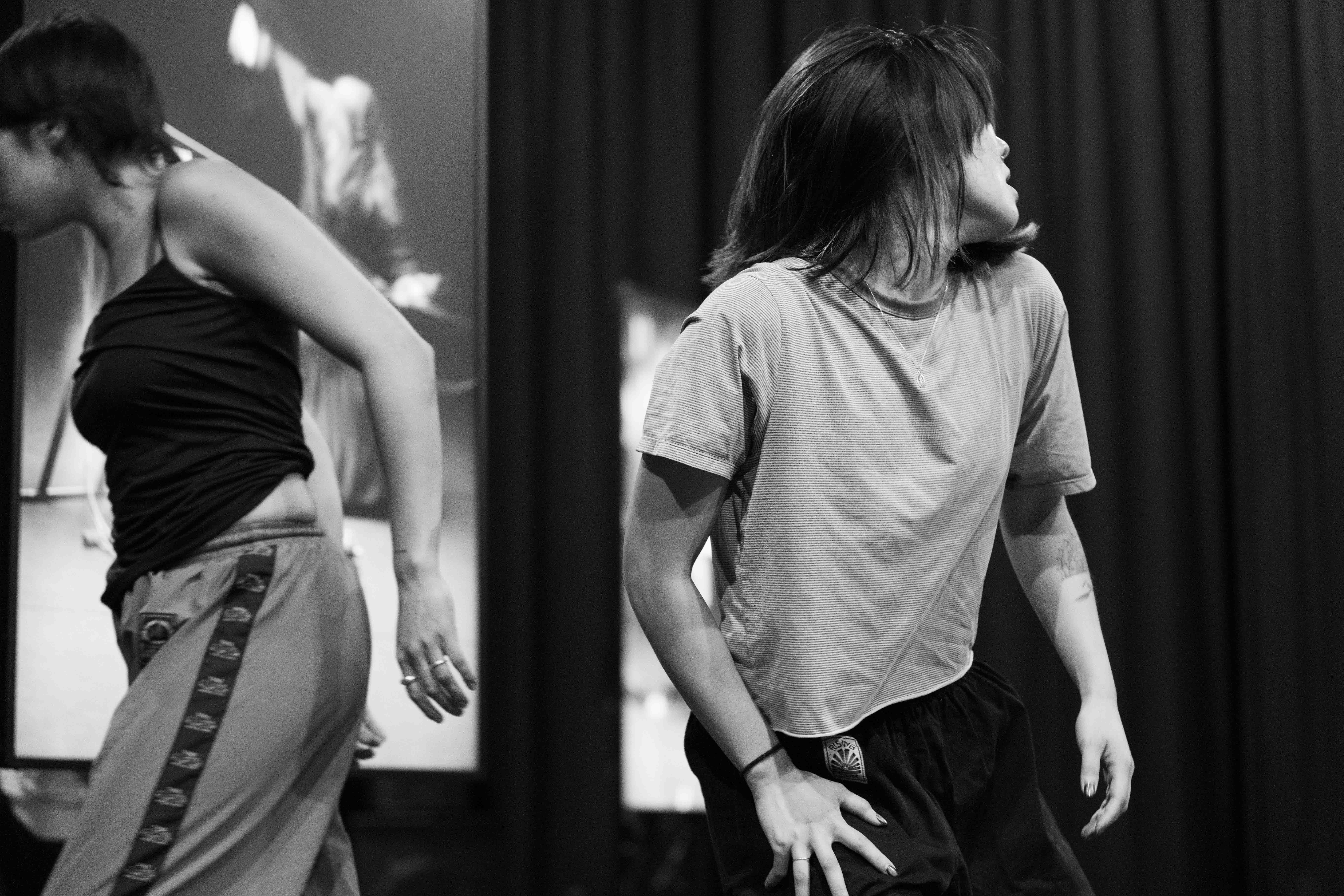
Jasmin Sheppard on migration and truth-telling
There's been recent discourse about the role of migrants in Australia and how it's a recent thing, and I think that stories like this are vital for Australians to engage with, to reframe and retell the experience of non-white migrants and their relationship with the First Peoples of this country.
They actually go back a lot further than what people assume, that our migrant history is completely relevant and important and vital to how we tell the story of this country. That this is not something that happened 30 years ago or 40 years ago, this is something that happened 200 years ago, even pre white colonisation.
And we have the cameleers that were here long, long before; the Dutch; the Egyptians- there's Egyptian hieroglyphs carved into the rocks on the East Coast of Australia. So stories like this are important because it's only through telling the truth of our relationships with each other, Aboriginal People and migrants, that we combat racism.
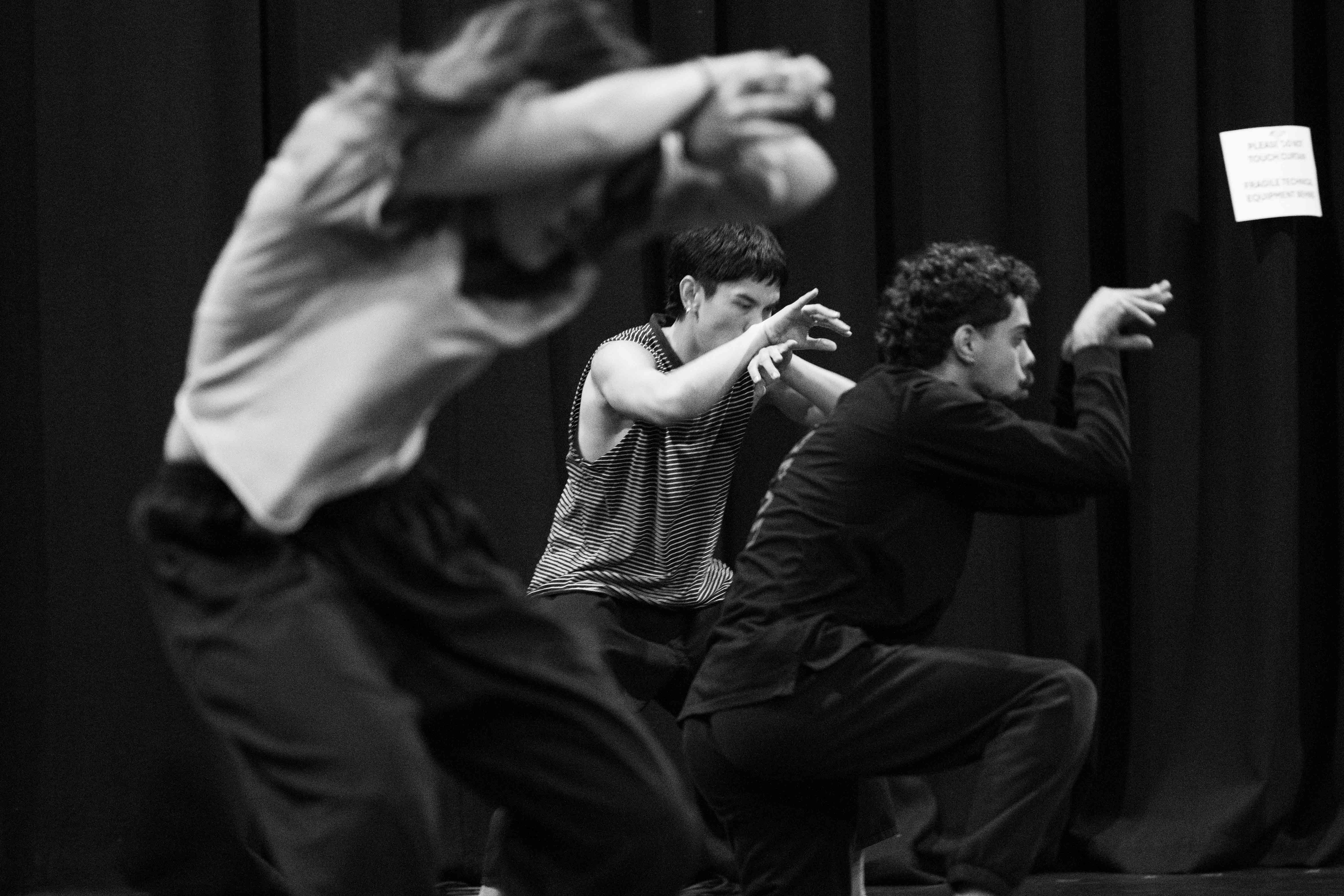
The discovery of gold in Australia during the 1850s saw gold-seekers from around the world migrate to Australia in search for new fortunes. This period significantly increased Australia’s population, with Chinese miners the largest group of non-European migrants. Along with the rise in population, the gold rush boosted the economy and influenced the nation’s national identity. Great wealth was made during this period, it was also a time of significant political and social change as the colonies navigated new relationships and communities. Life on the goldfields was not easy, unfortunately for Chinese miners, some of their experiences include hardship, and hostility and discrimination from both fellow miners and government. In the search for gold, many Chinese miners also sought other means to make a living, including working on pastoral stations and exploring business opportunities. Many Chinese migrants became market gardeners, and began a rich Cultural history of embedding an exchange of food which remains to be a significant and important part of Australia’s culinary traditions.
During this period relationships between Chinese men and Aboriginal women formed with many families celebrating their long traditions, blending Chinese traditions and Aboriginal kinship and cultural practice.
We acknowledge and celebrate the incredible contributions of Chinese migrants and their families to Australia and the nations’ social, economic, and cultural development.
Jasmin Sheppard speaks about the symbolism of Ash in Two Blood
The use of ash is incredibly symbolic because it really weaves together those two stories of cultural practices from both the Cantonese side and the Tagalaka side. Fire being so important in the Ching Ming ceremony in Cantonese culture, where you throw in the effigies into the fire for your ancestors so that they can have all of the things that they really wanted in their earthly life and ash that comes from those effigies being burned. And then on Tagalaka Country the fire, cultural fire and how we burn country to keep it healthy and to keep it alive. That fire is actually something good and something not to be feared when it's used in the right way and that it is something that we are so familiar with.
So the ash from the cultural fire that makes its way into the topsoil and how it feeds country, versus the ash that comes from what you've given to your ancestors, there was some beautiful shared symbolism in ash that we thought was really poignant to bring into the work.
Nicky Tsz Tung Li speaks about the role of a cultural consultant
My main job as the cultural consultant is to answer whatever questions the creative team have about the experience of having Chinese heritage and living in Australia, but also talking to the production team and talk about how they can better engage with the local communities here. I used to think I'm not qualified to be a cultural consultant because I'm not a history expert, I'm also not a representative of any culture, but I've realised that my main job is not to have answers for every question, but rather to be considerate and make sure whatever we create is safe for audience to see and also safe for the creatives to perform.
Working on Two Blood, it makes me reflect on my own identities. Both growing up in Hong Kong in a pretty much colonial place with Chinese heritage, but also living in Australia as an immigrant. And secondly, practically, it also really inspired my work because I think about political stuff a lot and I think about society a lot and sometimes I don't know how to get across serious messages in a way that make people want to listen. And ADT and Two Blood does it so well, that is saying such important stuff through just movement and not too many words and that's something that I really want to learn.
I think a lot of immigrants, especially those who moved here in their adulthood, they don't know a lot about Australian history because they missed out all those history lessons at school. So I think seeing on stage, seeing how our ancestors play a part in building Australia would be quite powerful and hopefully inspire them to learn more about Australian history and First Nation history. Within Two Blood, even though it's set so many years ago, we see the characters, struggling with their cultural identities, just like so many of us still do today. I think it would be quite powerful to see that.
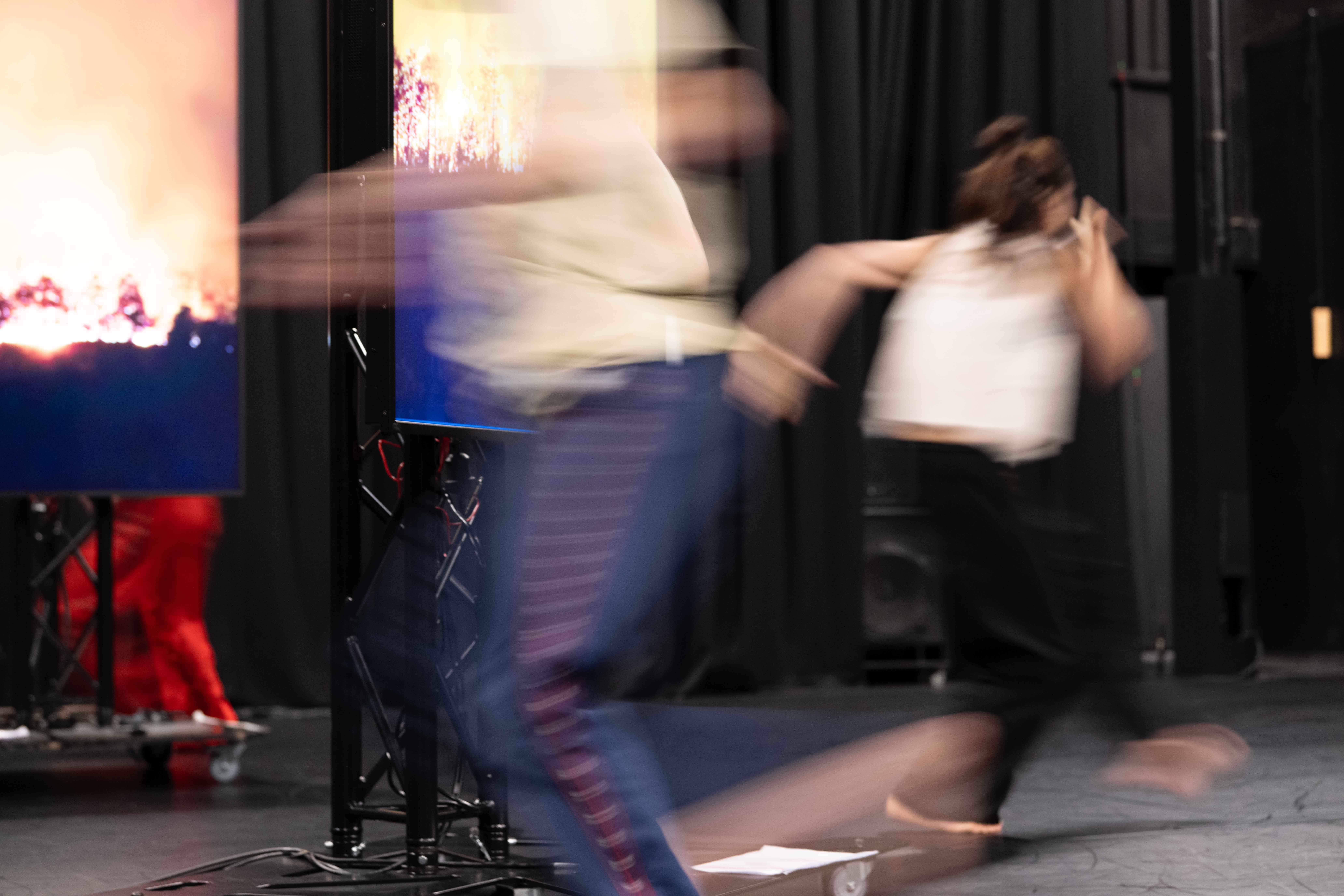
Two Blood has been co-commissioned by OzAsia Festival, Monash Performing Arts Centre and Queensland Performing Arts Centre (QPAC).
Supported by The National Foundation for Australia-China Relations, The Australian Government: Department of Infrastructure, Transport, Regional Development, Communications and the Arts and AGSA’sTarnanthi: Festival of Contemporary Aboriginal and Torres Strait Islander Art.
Two Blood is inspired by and draws from the production 宿 (stay) which premiered at Sydney Festival 2022 and was presented by Kurinji and SAtheCollective. We respect and acknowledge the many ancestral stories that have formed the foundation of the project.
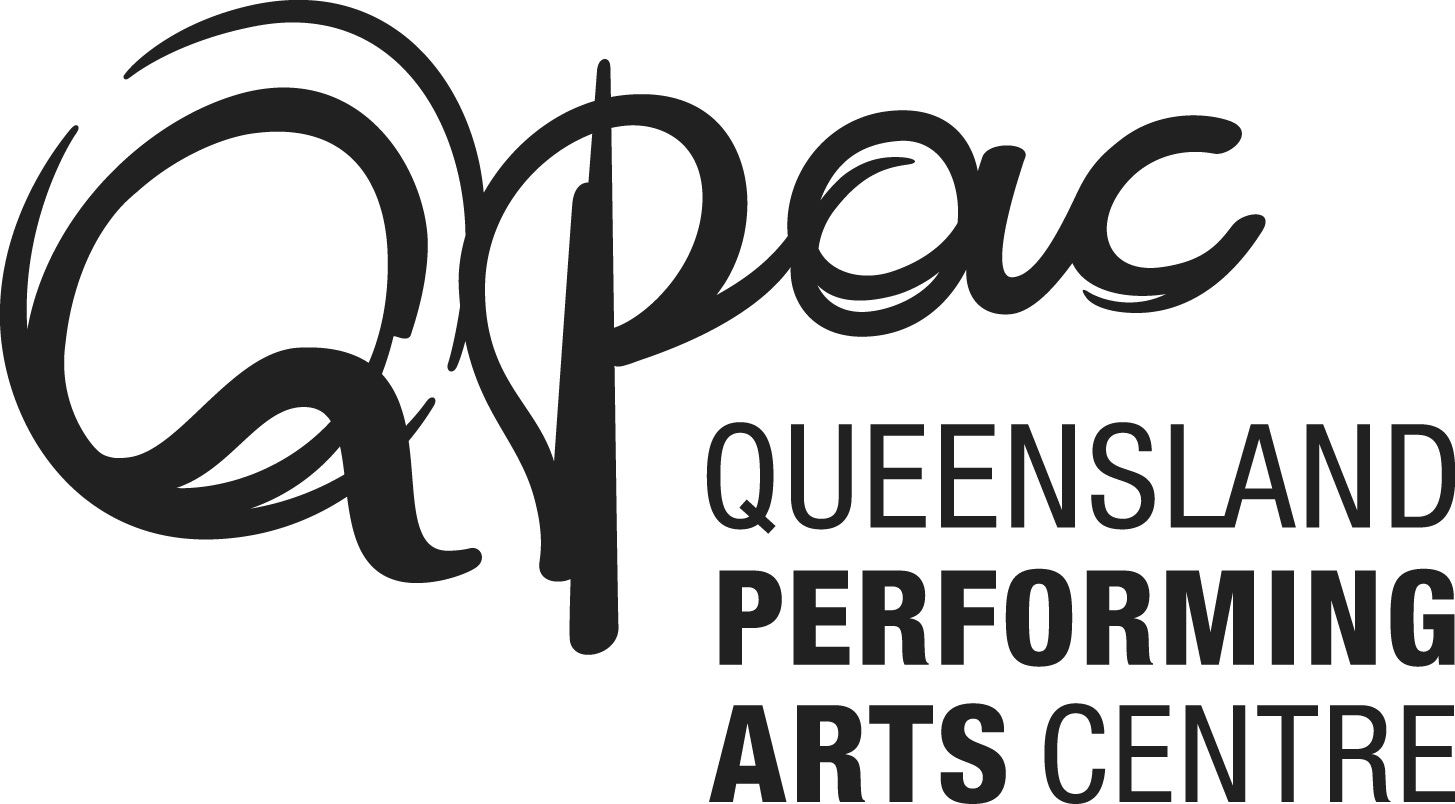

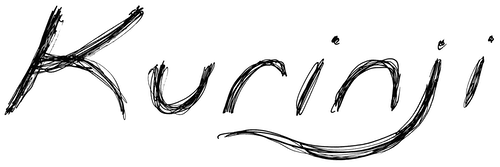


 Read Translations
Read Translations